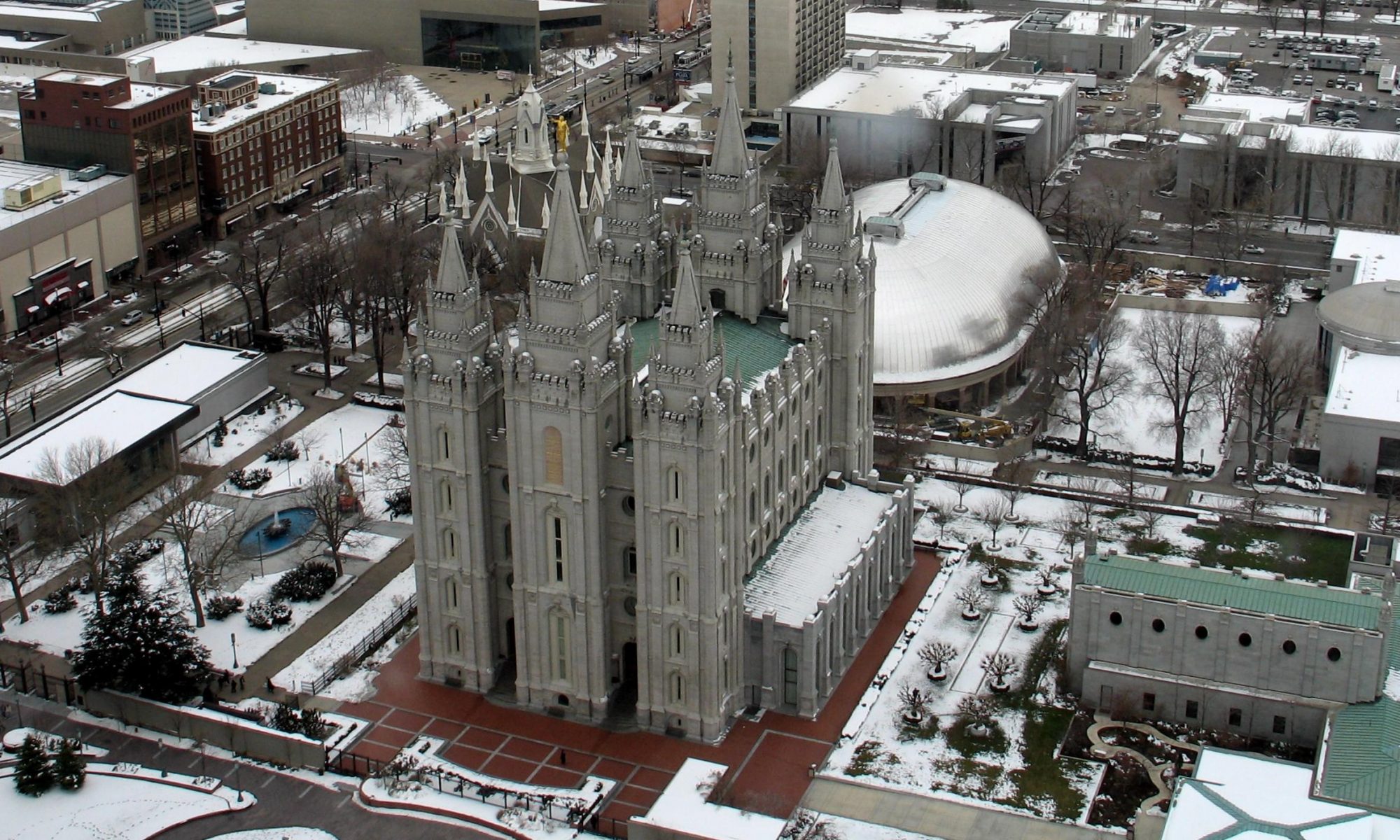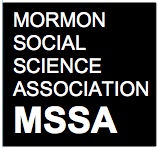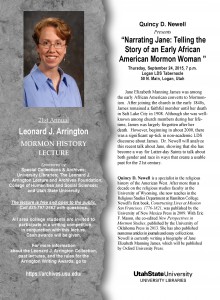There is new job available for social and behavioral scientists in the Research Information Division of The Church of Jesus Christ of Latter-day Saints. Attached are the job description and a cover letter.
Job Opening: LDS Church Research Information Division
There is a new job opening for an Applied Social Science or Product Researcher. See the letter and job description.
2016 MORMON MEDIA STUDIES SYMPOSIUM: Mormonism and Global Media
2016 MORMON MEDIA STUDIES SYMPOSIUM
CALL FOR PAPERS, PANELS, AND PRESENTATIONS
Theme: Mormonism and Global Media
Conference site: BYU Hawai‘i campus in Lā‘ie, Hawai‘i
Conference date: November 3 & 4, 2016
Proposal submissions due July 1, 2016 (early submission strongly encouraged)
Symposium website: http://mormonmediastudies.weebly.com/
Sponsored by Department of International Cultural Studies and the College of Language, Culture and Arts, BYU Hawai‘i
Mormonism grows in a world with a variety of religion-society and religion-media relationships. Its historical, cultural, social, and political insertions into host countries may differ significantly from place to place. Thus Mormonism’s treatment by the media, its attempts to publicize itself through the media, and its members’ use of media technologies in religiously relevant ways—to name a few types of relationships with the media—may differ significantly from U.S. Mormon-media patterns. A conference on Mormonism and media surveys the current situation, raises new questions, and encourages new conversations about a globally growing religion and the part media play in particular cultures.
Submission of Paper and Panel Proposals
Academics, professionals, and students are invited to submit competitive papers or panel proposals about any aspect of Mormons and the media. Papers and panels may be broadly interdisciplinary; international perspectives are strongly encouraged; all rigorous scholarly methodological frameworks and theories are welcome. Submissions should be either full papers (preferred; approx. 6,000–8,000 words, with 100-word abstract) or extended abstracts (approx. 500 words). Proposals for audio and/or visual presentations (including short films) with rigorous analysis are welcome. Papers recently presented or published elsewhere may be considered (please provide details).
Examples of topics include but are not limited to:
- Analyses of media content by or about Mormons (textual, rhetorical, thematic, etc.) in various cultures
- Mormon-produced media (contemporary, historical, international, etc.): Internet, social media, newspapers, magazines, books, television, radio, film, etc.
- Content, producers, and effects of recent and historical depictions of Mormons in news and popular culture
- Mormons, media & politics, U.S. and international
- Mormon media uses and effects, including social media
- Mormon media images and depictions (contemporary & historical)
- Concepts of voice, identity, and community in media by or about Mormons
- Content and effects of LDS public relations, advertising, messaging
- Audience studies: meaning-making, effects, responses, influences, behavior and attitudinal changes
- Institutional LDS perspectives on media: responses and effects
- Mormons as media creators, producers, publishers, inventors, disseminators, editors, writers, etc.; or others in these categories who have produced LDS-related media or content
- Mormon-related film, TV programming, reality show participation, etc.
- Comparative studies (Mormons and media as compared to other religions or institutions)
- Historical, sociological, literary, rhetorical, legal, international, psychological, etc. perspectives on Mormons and media
- Mormon-related entertainment, theater, music, and popular culture productions
Papers presented at the symposium will be given special consideration, at authors’ discretion, for publication in the Journal of Media and Religion.
Paper, panel, and presentation proposals must be submitted by July 1, 2016 in Word or PDF format as an email attachment to Dr. Chiung Hwang Chen at chenc@byuh.edu or Dr. Daniel Stout at daniel.stout@byuh.edu. Early submission and registration are strongly encouraged. For more information, please visit the symposium website at http://mormonmediastudies.weebly.com/
Mormonism Meets Social Science: A Conference of the Mormon Social Science Association and the Utah Valley University Religious Studies Program
The program for the MSSA and UVU Religious Studies Program mini-conference on Monday, April 11th, is now available. You can see the full program here.
Ask An Expert: Is Mormonism a religious system according to Clifford Geertz?
Q: Is Mormonism a religious system according to Clifford Geertz?
A: Several members of the MSSA replied to this message.
David Knowlton, an anthropologist at Utah Valley University, wrote:
This is not a simple question, although it appears to be so. A simple, answer, however, acknowledges the complexity while recognizing that Geertz’s focus on systems of symbols, “pervasive, long lasting moods and motivations” and “aura of facticity” were used by Douglas J. Davies in his the Mormon Culture of Salvation to great effect.
Yes, Geertz’s definition can fit Mormonism.
However, a more critical look at the definition, that takes into account problems with the notion of symbols and their formation, power, the difficulty of system, breaks in pervasiveness, and problems with perceptions of facticity as are also found in anthropological work, can also be used to make sense of Mormonism.
The question, however, asks if it is a religious system according to Geertz. Well, that is more difficult because Geertz is focusing on system as defining religion and not religion as defining system. Mormonism has system and it functions as a religion. Despite the analytical concerns here, I would still argue that Geertz’s definition productively fits Mormonism.
Douglas J. Davies also wrote in to recommend that you read his book in which he engages this question at length:
Douglas J. Davies. 2000. The Mormon Culture of Salvation. New York: Routledge.
Ask An Expert: Are there mental health consequences to being LGBT in the LDS Church?
Q: “Does being LGBT in a non-affirming environment, such as the LDS Church, contribute to worse mental health outcomes and quality of life scores than an individual would have in an affirming environment?”
A: Luckily, there is a growing body of research that specifically addresses this question. A number of articles have come out just in the last year that present the results of a survey of LGBTQ individuals who are or were members of the LDS Church. Among the publications are a number of findings that directly address this question.
For instance, in Dehlin, Galliher, Bradshaw, and Crowell 2015, the authors note that LGB individuals fall into four categories when it comes to their relationship with religion (similar to other research on this topic):
- Individuals who reject their LGB identity (5.5% of their sample)
- Individuals who compartmentalize their sexual and religious identities (37.2% of their sample)
- Individuals who rejected their religious identity (53% of their sample)
- Individuals who integrated their religious and sexual identities (4.4% of their sample)
After categorizing the participants in their survey into these groups, they then compared these groups on a variety of measures, including some related to mental health and quality of life. Individuals in the first two groups had the worst mental health outcomes. Specifically, members of the first two groups had statistically significantly higher scores on internalized homophobia, identity confusion, and depression than did individuals in the other two groups. Individuals in the last group, who were quite rare, actually fared well, but were unlikely to live in Utah and had lots of family support, allowing them to integrate their sexual and religious identities.
In another study drawing on the same data set, Crowell, Galliher, Dehlin, and Bradshaw 2015, found that more active LGB members of the LDS Church had statistically significantly higher levels of both minority stress indicators (i.e., higher levels of internalized homophobia, greater need for privacy or concealment, greater need for acceptance, greater identity confusion, greater difficulty in coming to terms with and disclosing sexual identity, and higher levels of prejudice against heterosexual individuals) as well higher levels of depression. This research aligns with other research with similar findings outside the LDS Church (Herek, Gillis, and Cogan 2009).
In short, the existing research to date does indicate that participation in a non LGBTQ affirming, conservative, organization like the LDS Church does result in worse mental health and quality of life outcomes than does not affiliating with such an organization.
References:
- Crowell, K. A., Galliher, R. V., Dehlin, J., & Bradshaw, W. S. (2015). Specific Aspects of Minority Stress Associated With Depression Among LDS Affiliated Non-Heterosexual Adults. Journal of Homosexuality, 62(2), 242–267. http://doi.org/10.1080/00918369.2014.969611
- Dehlin, J. P., Galliher, R. V., Bradshaw, W. S., & Crowell, K. A. (2015). Navigating Sexual and Religious Identity Conflict: A Mormon Perspective. Identity, 15(1), 1–22. http://doi.org/10.1080/15283488.2014.989440
- Herek, G. M., Gillis, J. R., & Cogan, J. C. (2009). Internalized stigma among sexual minority adults: Insights from a social psychological perspective. Journal of Counseling Psychology, 56, 32–43.
The Research Information Division at LDS Church Headquarters is Hiring: Applied Social Science Position
Here is a cover letter and here is the job posting for a new Applied Social Science Position for The Church of Jesus Christ of Latter-day Saints.
Joanna Brooks giving the Glenn M. Vernon lecture
The MSSA sponsors the Glenn M. Vernon lecture every other year at the SSSR meetings. This year, the Glenn M. Vernon lecture will be given by Joanna Brooks, Professor of English and Comparative Studies and the Associate Dean of Graduate and Research Affairs at San Diego State University. Her talk will be titled: What Forty Years of Mormon Feminism Teaches Us About the Study of Women in Religion: An Intellectual Agenda for the Next Forty Years. The talk will be October 24th at 7:30 pm in the Grand Pacific Ballroom C at the Newport Beach Marriott Hotel & Spa.
21st Annual Arrington Lecture
Please see this PDF and the flyer below (click for full-size) for more information on the 21st Annual Arrington Lecture.
Ask an Expert: What percentage of Mormons divorce when one spouse leaves the religion?
Q: Do you have any insight on how often a spouse leaving the church leads directly to divorce? I am most interested in the statistic for divorce attributed primarily to the spouse changing their beliefs and controlled for other behaviors that are independent of simply no longer believing or participating.
A: Arland Thornton provided a citation that had a statistic on this. He found the statistic in a post by Bob McCue:
“And what of my relationship with my wife and children? My wife and I were on the brink of divorce because she could not respect and love me as I am now in the fashion she did the priesthood leader I used to be. I could feel a loss of intimacy – an emptiness and sorrow where her love for me used to be. Something had died between us. Thankfully, she now recognizes the legitimacy of my concerns respecting the Church’s influence in our lives and the importance of ensuring that our children are raised with an understanding that religious matters are not clear-cut. The world is full of shades of grey, and the Church is no different. And while she continues to be an active and faithful member, she respects what I have done and supports me. We made it over the precipice with nothing to spare. I recently became aware of an unpublished master’s degree thesis in anthropology at a Canadian university that surveyed LDS returned missionaries who had gone through something similar to what I have, and found an 80% divorce rate. That does not surprise me given my recent experience.”
Unfortunately, Bob McCue did not note what that unpublished Master’s thesis was, so we don’t have a specific reference on this.
I (Ryan Cragun) did a little more sleuthing on this topic as I was wondering if there might be a dataset that could provide some information on this. What I found is far from perfect, but may be helpful to you. The General Social Survey (GSS) asks participants their religious affiliation at the time of the survey (variable = “relig”) and when they were 16 (variable = “relig16”). If respondents indicated “Mormon” as their religion, that gets coded into separate variables (Mormon at present = 64 in the variable “other”; Mormon at 16 = 64 in the variable “oth16”). Combining these two variables, it’s possible to isolate individuals who were Mormon at 16 but have since left the religion (there are 186 such individuals in the combined 1972-2014 GSS data set).
Of those 186 individuals, 46 had never married, which means they were never at a risk of divorcing. Of the remaining 140 who had married, 34 were currently divorced or separated at the time of their participation in the survey, for a divorce/separation percentage of 24%. Compare that to individuals who were Mormon at 16 and still Mormon at the time of the survey: their divorce/separation percentage was 11%. In other words, individuals who left the Mormon Church were more than twice as likely to divorce than did those who stayed.
This is somewhat problematic for several reasons. First, the variable for marital status (“marital”) does not indicate whether the respondents have ever divorced (there is a variable that asks that, but it’s not included in every wave of the survey). So, it is likely that the percentage of respondents indicating they are currently divorced is lower than the percentage who have ever divorced. Second, the GSS does not include a variable indicating when people left a religion or switched their religious affiliation. As a result, we can’t say that those who left the religion did so when they were married. Third, we don’t know what the cause of divorce or separation was. The higher rate of divorce among those who left the LDS Church could be due to a number of other factors and not exclusively the result of them having left the LDS Church.
Taking all of the above into account, data from the General Social Survey suggest that about 1 in 4 people who were Mormon at 16 but have since left the religion have divorced or separated from their spouse, versus about 1 in 10 who remained Mormon.
In the interest of looking just a little further into this, I also examined whether marital satisfaction was higher among Mormons married to Mormons (variable in the GSS is “spoth”) versus Mormons married to non-Mormons. Turns out, marital satisfaction is significantly and substantially higher among Mormons married to other Mormons. Of the 315 Mormons who were married to other Mormons, 71% said their marriage was very happy, 28% said it was pretty happy, just 1.6% said it was not too happy. Of the 69 Mormons married to non-Mormons, 54% said their marriage was very happy, 36% said it was pretty happy, and 10% said it was not too happy. Admittedly, these numbers are rather small, but they are sufficient to find that the differences in marital satisfaction are statistically significant (Chi-Square = 17.169, p < .001). Again, these numbers are not a direct answer to the question since it isn’t clear whether those who are married to non-Mormons are married to people who used to be Mormon or someone who never was Mormon. Even so, they do indicate that Mormons who are not married to other Mormons have substantially lower marital satisfaction than do Mormons who are married to Mormons, which would likely increase the odds of divorce and separation.
Overall, it does not appear as though there is a readily available citation to answer your question. However, evidence does seem to suggest that the odds of divorce increase when one member of a couple leaves the LDS Church.


